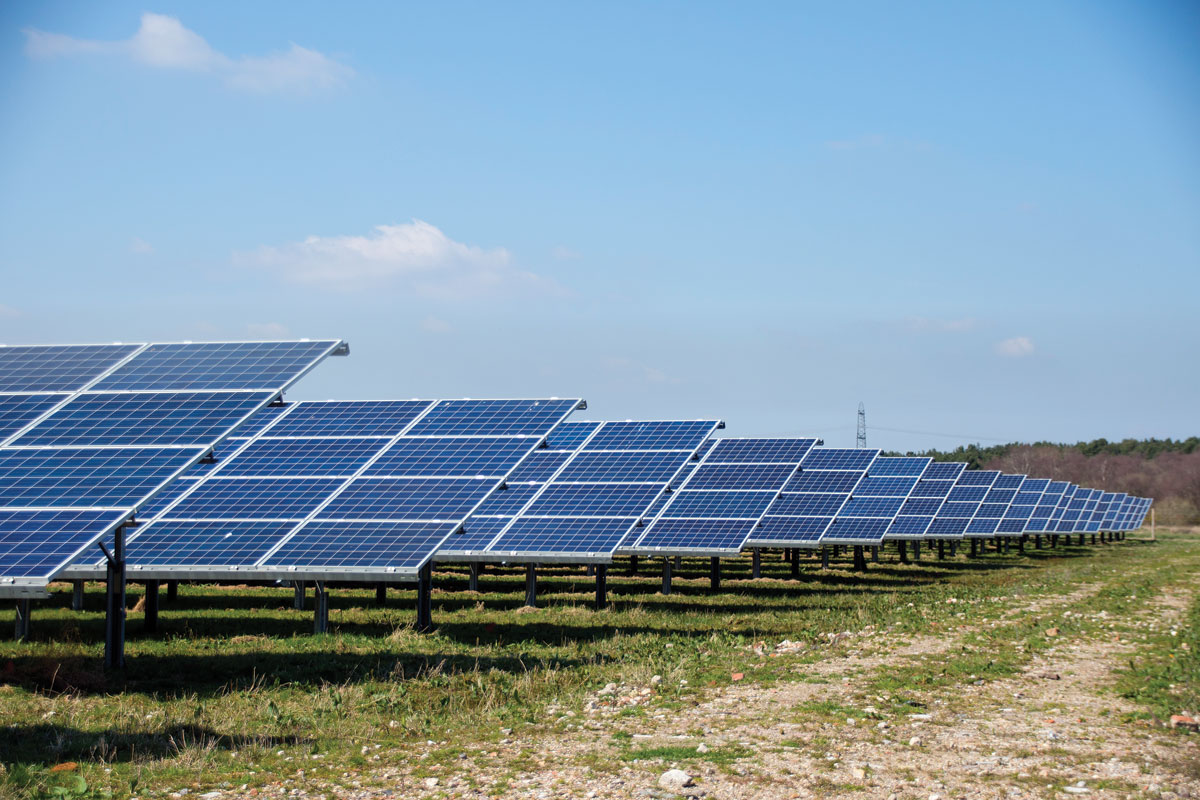MEGA SOLAR POWER PARKS
By now, the world knows that Prime Minister Narendra Modi is betting on renewable energy to be his all important initiative to fight climate change and deliver power to all. What, however, is not fully known is that the Modi government is banking on ultra mega solar power parks across the country, to deliver on the renewable promise, writes Siddharth Srivastava. (#Environment, #GoingGreen, #SolarPowerinIndia, #Siliconeer, @Siliconeer, #RenewableEnergy, #FightingClimateChange, #GlobalWarming, @narendramodi, #narendramodi)
This when India’s record of executing large projects has been quite dismal. The country’s progress, for instance, in making operational coal-fired ultra mega power projects has been quite poor. Ultra mega solar projects are seen a crucial to India achieving its ambitious target of 100 GW solar capacity by 2022. However, to New Delhi’s credit, it is making efforts to learn and undo the mistakes made in the past. The strategy under the new paradigm is that the government, both the center and state, take the initiative to tie-up laborious backend matters linked to large projects such as land acquisition, permits, including environmental clearances, evacuation, including transmission and off-take. Distribution companies, that are mostly state-owned are also taken on board to ensure sale of electricity. Project development, in such a scenario, entails winning competitive bids and setting up the solar plant.
New Delhi has also floated the idea of setting up solar zones that will be bigger than the mega solar parks. In these, the government will play an enabling role, but the project developer will need to acquire land, which is a complex and protracted process in India. No doubt, New Delhi’s intentions to set up solar parks are good.
In a statement in Parliament, Piyush Goyal, minister for new and renewable energy (MNRE) recently said New Delhi has given in-principle approval to 27 ultra mega solar power projects across 21 states with a cumulative capacity of 18,418 MW. India has set a target to set up 25 solar parks with total capacity of 20 GW by April 2019, with each project planned to have at least 500 MW of operational capacity. According to Goyal, MNRE is in now in the process of engaging with state government to come on board.
“The ministry has sent the scheme for development of solar parks to various states along with MoU to all the state governments against which 12 states have given consent for setting up of solar parks,” Goyal said.
The states that have approved setting up of the solar parks are Gujarat, Madhya Pradesh, Telangana, Kashmir, Andhra Pradesh, Karnataka, Uttar Pradesh, Meghalaya, Punjab, Rajasthan, Tamil Nadu and Odisha.
More to be done
There has indeed been considerable bullishness about India’s renewable sector, especially solar power generation, and the positive role being played by the government. However, in a recent report submitted to Parliament, the country’s independent auditor, the comptroller and auditor general (CAG) has highlighted aspects that need to be fixed. According to CAG, research and development projects sanctioned by India’s new and renewable energy ministry (MNRE) have failed.
“Realization of deliverable outcome was not achieved in a majority of projects. This was partly due to the fact that industry participation could not be secured in the projects where it was envisaged, which limited the commercial exploitation of technologies developed,” CAG said. The auditor said there were delays in implementation of projects and inability of agencies to file patents and publish research papers as should be. CAG also said monitoring of the projects by MNRE was lax.
Moving to other aspects that need attention, according to CAG, as against National Action Plan on Climate Change target of 8% and 9% Renewable Purchase Obligation (RPO) for years 2012-13 and 2013-14, national fulfillment was a low 4.28% and 4.51%, respectively. Fulfilling the RPO norm is important to ensure renewable generators find buyers in the market.
The auditor further said that MNRE has not worked out any mechanism to claim clean development mechanism (CDM) benefits for both grid connected and off-grid renewable energy projects. There was also lack of awareness about claiming CDM benefits.
CAG pointed out certain fiscal anomalies under which entities such as Reliance Industries Limited have claimed tax and subsidy benefits for developing solar projects that they were not eligible. The auditor observed exploitation of wind power potential was very low at 5-17% in Gujarat, Andhra Pradesh and Karnataka.
Recently, in another report a Parliamentary panel said inadequate budget allocation may adversely impact India’s target of 175 GW renewable energy capacity by 2022. While welcoming the government’s ambitious target, it warned, “There is no mention about financial requirements and allocation of enhanced physical target, the Committee are concerned about inadequate budget allocation, as it will adversely affect achievement of targets set.” Indeed, there is still some way to go before renewable energy can attain the commanding heights of India’s generation economy.


